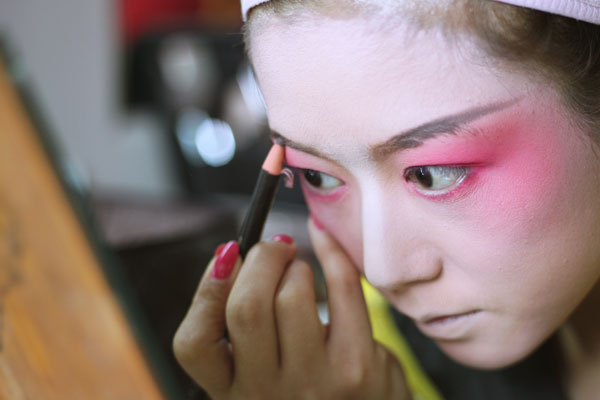
Performers of Chinese opera share the stage with musicians playing Western instruments such as the trumpet and drum in the show Chinese Music House, which is an experimental re-interpretation of the country's ancient performing art. [Photo/China Daily]
It's a Friday afternoon in Beijing's Daguanyuan Theater.
The theater is inside a park, built in the 1980s, but inspired by the descriptions of Daguanyuan Garden in the classic novel A Dream of the Red Mansions. As the red curtain rises, Kunqu Opera performer Ma Jing walks slowly toward the center of the stage. Her exquisite garments, accessories and movements conjure up more images from the novel, a vision of scenic beauty and refined lifestyle.
However, the Kunqu Opera singing is not accompanied by the usual traditional Chinese instruments, such as the bamboo flute, pipa (four-stringed plucked instrument) and sheng (mouth-blown free reed instrument), but electronic music produced by a DJ followed by bass, drum and trumpet.
In a 30-minute section, four extracts from classic Kunqu Opera pieces, such as The Peony Pavilion, have been adapted into mesmerizing electronic and energetic rock songs.
It was a rehearsal for China Music House, a show that will be staged at Beijing's Tango Club on May 2.
Also getting a revitalized staging: Pingtan, a traditional storytelling and ballad singing that originated in Suzhou, Jiangsu province, with a history tracing back to the Ming Dynasty (1368-1644).
Clad in long robes, well-known Shanghai Pingtan artists Gao Bowen and Lu Jinhua played pipa and sanxian (a three-stringed lute), and sang in Suzhou dialect with a DJ, guitarist and percussionist playing in the background.
Composer Lu Zhongqiang has spent the past three years on the show.